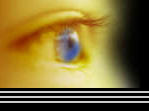The Creation
By James Donahue
“In the beginning
God(s) created the heaven and the earth . . .”
Science is in general
agreement that our solar system may be billions of years old. Most accept a “Big Bang” theory of creation . .
. that is that the formation of everything began from an intense concentration of gasses that exploded and eventually evolved
into the amazingly organized and controlled galaxy of stars, planets and moons in existence.
Religious groups, or
Creationists, say it could not have happened like this because explosions generate chaos. They argue that the order of all
creation stands as proof of a super intelligent creator. Strangely, while we disagree with most of the statements made by
Christians, we find myself in agreement on this point. There is a crucial difference, however.
While religion looks
outward to an external god figure that put all of this together, we see the universe from within. That is, we are all part
of Nuit, a living universe that is in a constant process of movement, growth, change and flux. We humans exist in bodies that
sprang from the elements produced from a living planet. All of the plants, animals, rocks and soil around us are products
of the same origin.
From information generated
by powerful telescopes that look deeper and deeper into space we know that all things have been in a state of movement and
explosive change, as well as creation, for a very long time. We see light from stars that once existed from such a distance
it took millions of years for the light to reach us. The star from where the light came may no longer exist, or it exists
in some other state. This attests to the size and age of our universe.
The universe is filled
with exploding stars, or supernova, all of them pushing massive clouds of energy out over areas so large they would engulf
our entire solar system if one occurred nearby. Astronomers also detect the existence of negative points they call black holes
that appear to be absorbing all of the stars, planets and matter that come near them.
The stars, or suns in
our galaxy, seen to us as The Milky Way, are in motion, all of them swirling around a core of the galaxy like a giant wheel
spinning in space. Beyond our galaxy are to be seen other galaxies of stars just like our own, all of them in constant motion
and states of change. The galaxies appear to be in motion, each of them affected by the actions of one another.
There is evidence that
new star formation is constantly occurring at the core of each galaxy. These seem to occur during peak times after an inflow
of gas from spinning materials slowly drifts toward the galactic center until reaching a critical mass and causing a super
explosive reaction.
Thus creation is an ongoing
thing. As old stars burn out and explode into supernova, they take nearby star systems with them, turning everything around
them into clusters of material that still comprise part of the living universe. At the same time, new stars are in the process
of being created and the black holes may be a type of recycling center, grinding up the old, used parts.
Thus the ancient Gnostics
were not wrong when they worshipped the sun as a sentient being. Nor were those who saw the Earth under their feet, the rocks
and the trees in the same way.
There seems to be a basic
design for all of the action throughout our universe. Everything is spinning around a nucleus, or center, much like the hub
of a wheel. When we look within ourselves and all of the things of our world, we find that we are comprised of matter made
of atoms. Atoms are all in similar motion. There is a nucleus with particles called electrons and positrons spinning around
it. The atoms comprise cells, which in turn, form the variations of things that we perceive as solid objects, including all
living matter on our planet.
While we perceive these
things as solid matter, once we examine the make-up of the atoms within, there is a realization that all things consist of
mostly space.
As already stated, there
is a remarkable similarity between the actions going on within the atoms to the movements of the planets around the suns and
the movements of the billions of suns within each galaxy, and so on and so on. For all we know there are other universes whirling
around one another. Is it possible that this pattern continues to infinite smallness and massive sizes beyond our ability
to conceive?
The universe we can observe
offers dramatic proof that it is alive, in constant movement and growth, or creation. There also is a definitive age of the
stars followed by their death.
So is there a higher
intelligence, even beyond the scope of our universe that we can say is responsible for putting it all together and furnishing
the energy to keep it running? This is the profound question from which theology and much of philosophy springs.
All things are living
parts of the whole. All that we perceive appears to collectively comprise the force that so many humans refer to as God.

